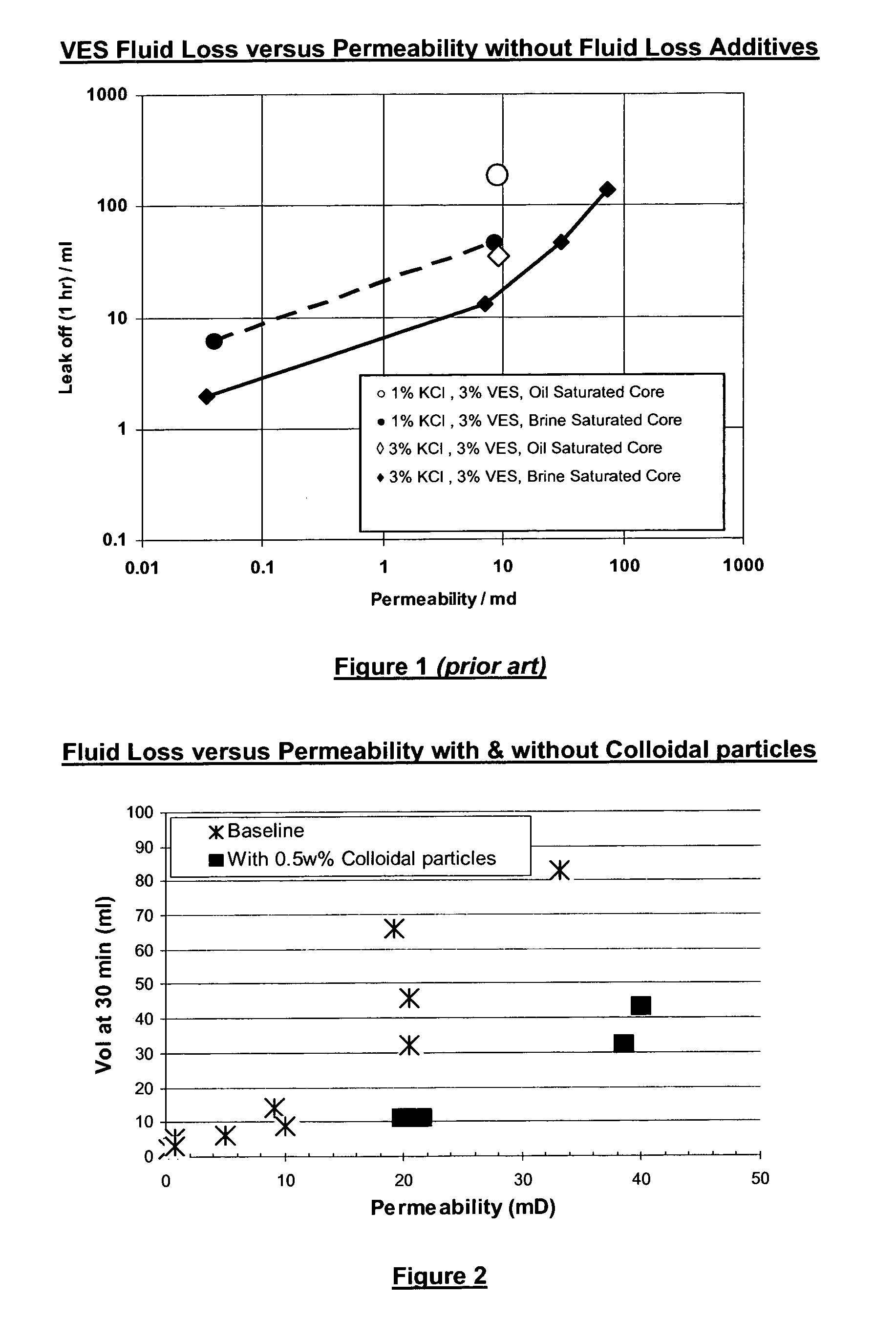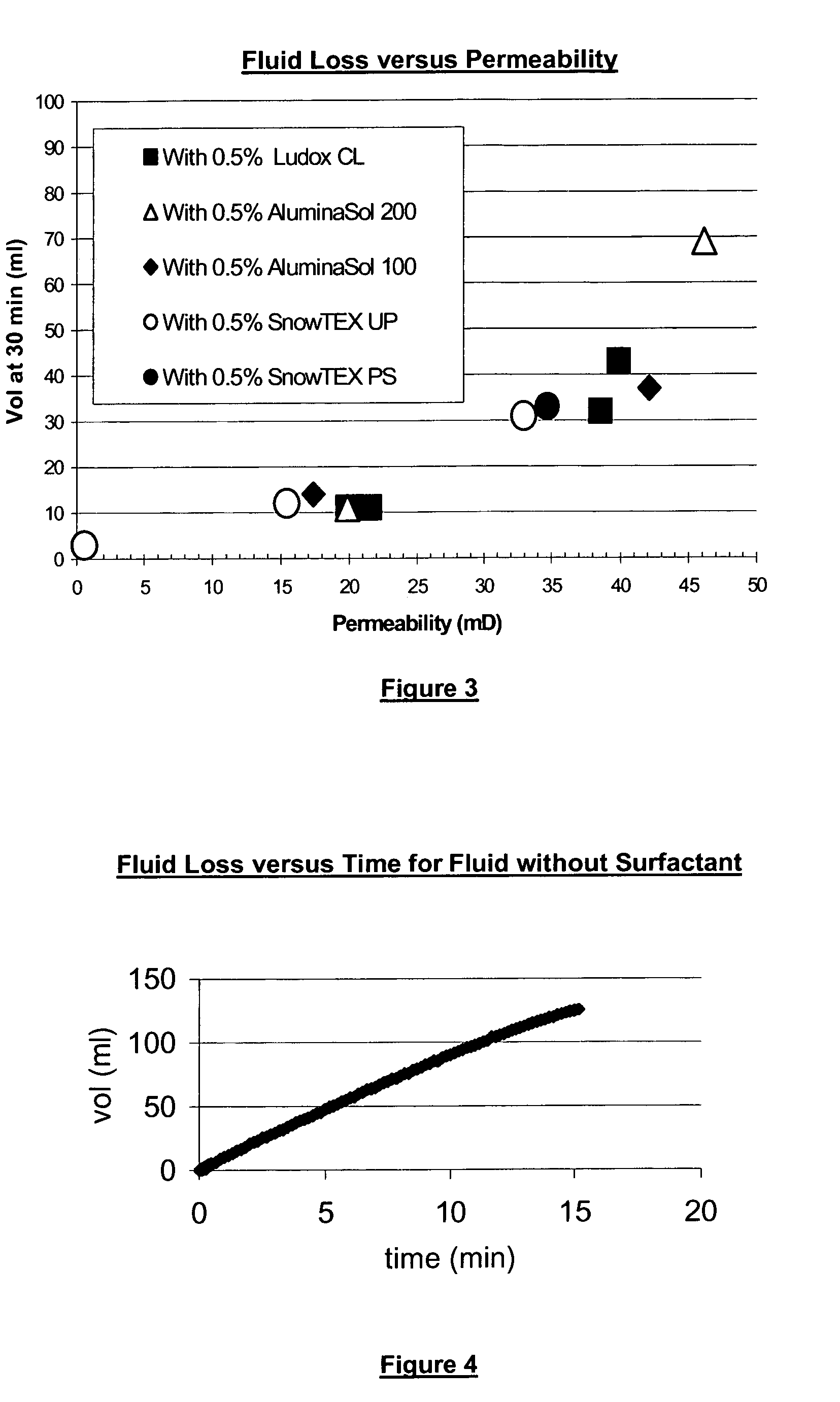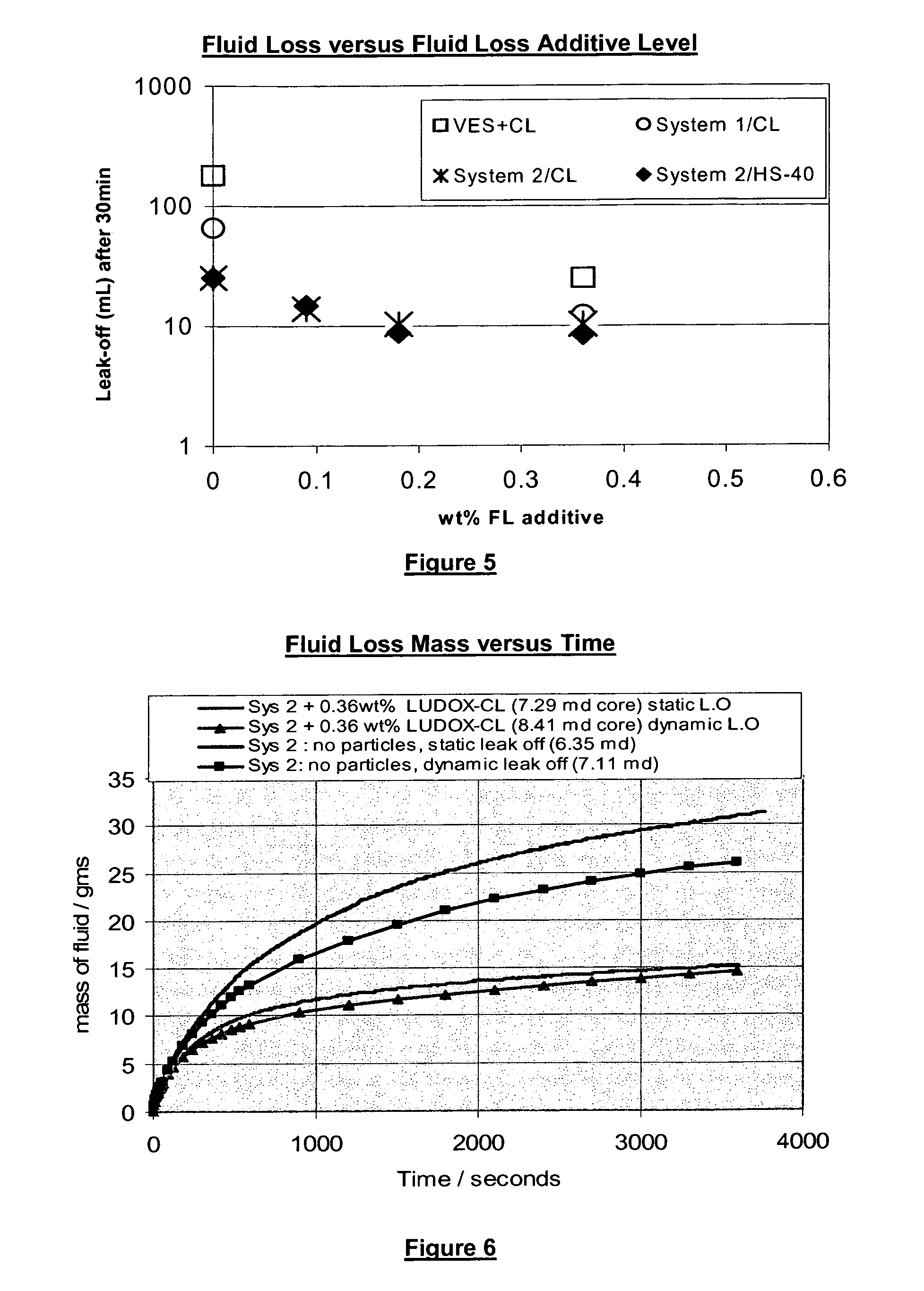Methods for controlling the fluid loss properties of viscoelastic surfactant based fluids
a technology of viscoelastic surfactant and fluid loss, which is applied in the direction of sealing/packing, chemistry apparatus and processes, and well accessories. it can solve the problems of inability to meter and add solid particulates, inability to effectively bridge and block pore throats, and poor performance of conventional fluid loss additives. it reduces fluid loss, reduces the effect of fluid loss
- Summary
- Abstract
- Description
- Claims
- Application Information
AI Technical Summary
Benefits of technology
Problems solved by technology
Method used
Image
Examples
examples
[0045]FIG. 1 presents the result of a comparison of the total fluid loss at 60 minutes (in ml) over a range of permeabilities. The lower curve (full lozenges) was obtained with brine saturated cores and an aqueous solution at 3 wt % potassium chloride and 3 wt % N-erucyl-N,N-bis(2-hydroxyethyl)-N-methyl ammonium chloride. The open lozenge corresponds to a test made with the 3 wt % fluid on an oil saturated core. A strong increase in leak-off is observed where the core permeability is greater than 5 mD.
[0046]When lower concentrations of surfactant are used (1 wt %, open and full circles), leak-off greater than 20 ml are observed for formation permeabilities of about 2 mD. At about 10 md permeability, a leak-off of more than 100 ml per hour is achieved with the 1 wt % surfactant solution.
[0047]Similar results are obtained with an aqueous solution containing a betaine surfactant that contains an erucic acid amide group (including a C21H41 alkene tail group) as shown FIG. 2 where the ba...
PUM
| Property | Measurement | Unit |
|---|---|---|
| diameter | aaaaa | aaaaa |
| length | aaaaa | aaaaa |
| size | aaaaa | aaaaa |
Abstract
Description
Claims
Application Information
 Login to View More
Login to View More - R&D
- Intellectual Property
- Life Sciences
- Materials
- Tech Scout
- Unparalleled Data Quality
- Higher Quality Content
- 60% Fewer Hallucinations
Browse by: Latest US Patents, China's latest patents, Technical Efficacy Thesaurus, Application Domain, Technology Topic, Popular Technical Reports.
© 2025 PatSnap. All rights reserved.Legal|Privacy policy|Modern Slavery Act Transparency Statement|Sitemap|About US| Contact US: help@patsnap.com



